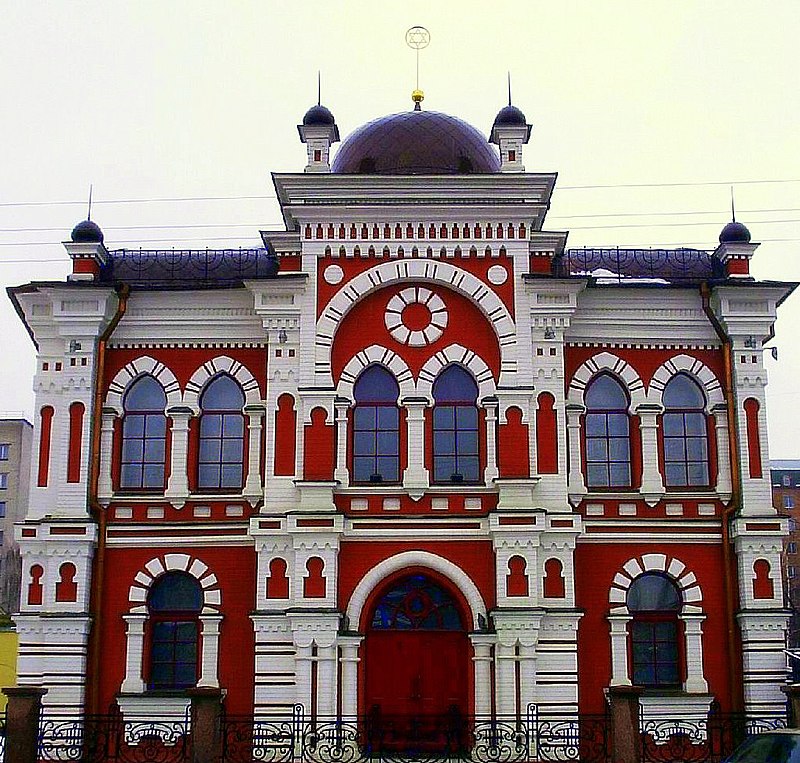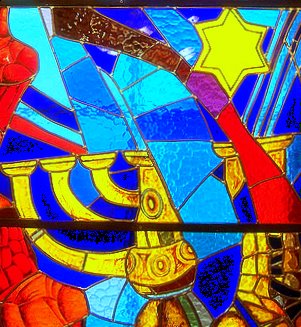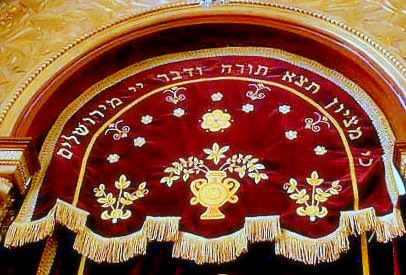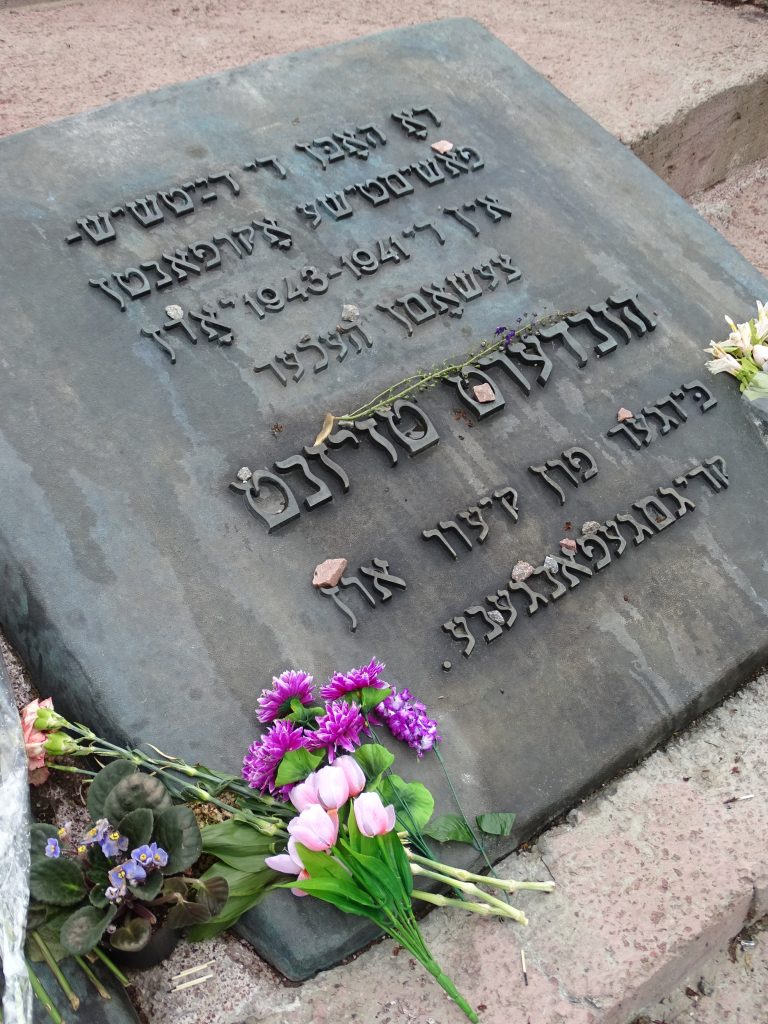
The terrifying war against Ukraine changes, of course, the function of these pages devoted to the Jewish cultural heritage of that country. Many of the places mentioned were razed to the ground by bombs. While these pages are not intended in the present time for tourism, they may be useful to researchers and students as historical references. References to so many painful histories during the pogroms and the Shoah, but also to the glorious history of Ukrainian Judaism, in its cultural, religious and Zionist dimensions. Wishing the Ukrainian people a speedy end to these atrocities of which they are victims.
From the outset, the history of Kiev has been tied to that of its Jewish community. One of the earliest references to the city is in a tenth-century document discovered in the genizah in a Cairo synagogue: a letter sent to Kiev by Jacob bar Hanuker. A synagogue in Kiev proper is mentioned in a document dating to 1113. A zhydovskie vorota (Jewish gate) is mentioned in a text from 1146, near present-day Lvov Square.

Decimated by the Tatars and then the Cossacks, the Jewish community never truly regained its footing here until the late nineteenth century.
The city’s two major temples, Tailors’ Synagogue and Brodsky Synagogue, date back to this era and are both still active today.
The synagogues of Kiev
Built in 1894-95 and designed by the architect Nikolai Gordenin along the Dnieper in the Podol district, the Kravtsev (tailors’) Synagogue bears no apparent Judaic marking on its facade. It nevertheless contains eastern and neo-Roman architectural features typical of nineteenth-century synagogues. Despite its luxurious interior, it was never shot down during the Soviet era.

The Central Synagogue has long been referred to by the name Brodsky in honor of Lazare Brodsky, the wealthy Kiev industrialist and patron who financed its construction. Built according to plans by the architect Georg Schleifer, it dates to 1898.
“He’s important, that Brodsky! When he rides by in his carriage, everyone on Kreshchatik Street and all the Jews tip their hats, myself included. Ah, if only one day I might become a Brodsky!” So wrote Sholem Aleichem.
The Central Synagogue functioned as a puppet theater until 1997. It has since been returned to the Jewish community; it is overseen by the Chabad (Lubavitch) community. It was completely restored in March 2000 and has regained its former splendor. There were other synagogues in Kiev, though their structures have not all survived.

The Merchants’ Synagogue, a few steps away from the Central Synagogue on Shota-Rustaveli Street, has been converted into the Kinopanorama cinema. The film Shoah was shown here in September 1998 with director Claude Lanzmann in attendance. The Galicia Synagogue once stood at Jilanska Street 97, not far from the station, while the Karaite Synagogue stood on Yaroslavov-Val Street; it was later turned into the “Actors’ House”. The Hasidic oratory once sat in the courtyard at Nijny-Val Street 37, in the Podol district.
The curious name of “Yehupets”
A tour of Jewish Kiev is linked to the personalities who lived here, such as Sholem Aleichem, who referred to the town by the rather silly name of Yehupets. “Everyone is laughing at me. I cannot even go out for a walk. They point at me and say, ‘That’s the wife of Menahem Mendel of Yehupets’. Not such a bad name, actually”, Aleichem claims in Menahem Mendel.

The houses where Aleichem lived are easily located: 5 Bolshaya-Vassilikovska Street from 1897 to 1903, and 27 Saxaganski Street from 1903 to 1905. A monument dedicated to Sholem Aleichem was erected on Basseinaya Street near the Bessarbia Market in 1997, not far from 5 Basseinaya Street, where Golda Meir was born and lived from 1898 to 1906.
Other well-known figures of this Jewish world include Isaac Babel, who studied here; pianist Vladimir Horowitz, who was born here in 1903 and lived here until 1925 (when he emigrated to the United States), musicologist and Yiddish folklorist Moses Beregovski, writer Ilya Ehrenburg, actor Solomon Mikhoels, and writer Peretz Markish, later arrested and gunned down by the Soviets along with other members of the Jewish Antifascist Committee.
The massacre of Babi Yar
The most tragic event in the history if Jewish Kiev was the Babi Yar massacre, committed by the SS and the Einsatzgruppen on 28 and 29 September 1941, several days after they captured the city. All of Kiev’s Jews were rounded up and led to the Lukianovka Jewish Cemetery, and from there to the Babi Yar ravine. They were all shot to death in the two days that followed.

Two monuments now commemorate this tragic episode:
The first, on Dorogojitska Street, was put up in 1976 after the poet Evgenii Evtushenko, composer Vladimir Shostakovitch, and other members of the Soviet intelligentsia protested the government’s efforts to erase the memory of the event. It is an official monument in grand Soviet statuary style. The plaque is inscribed in three languages, Russian, Ukrainian, and Yiddish, yet fails to mention the Jewish identity of the victims, reading only: “In this place, German fascists executed nearly 100000 citizens of Kiev and prisoners of war”.
The second monument, erected on Melnikova Street in 1991 and located at Babi Yar ravine only yards away from where the actual executions took place, depicts a large menorah but makes no additional clarification. “In memory of the tragedy at Babi Yar”, it reads in Ukrainian. Each year, on 29 September, memorials are held, bringing together the Jewish community and other prominent figures from the city.